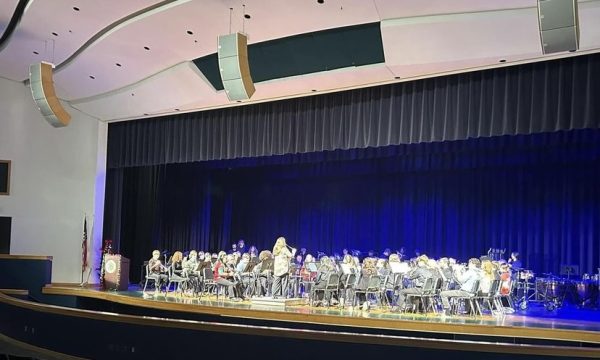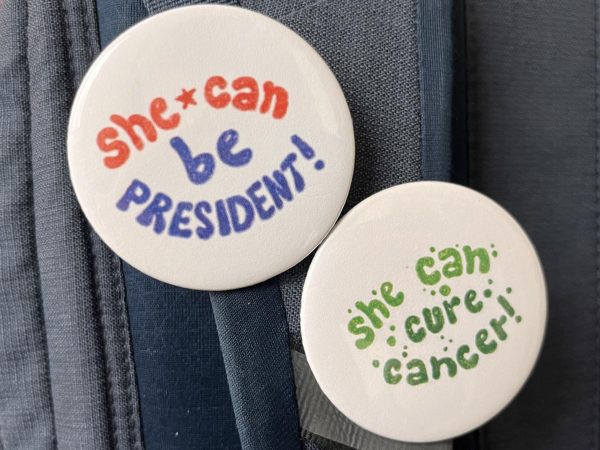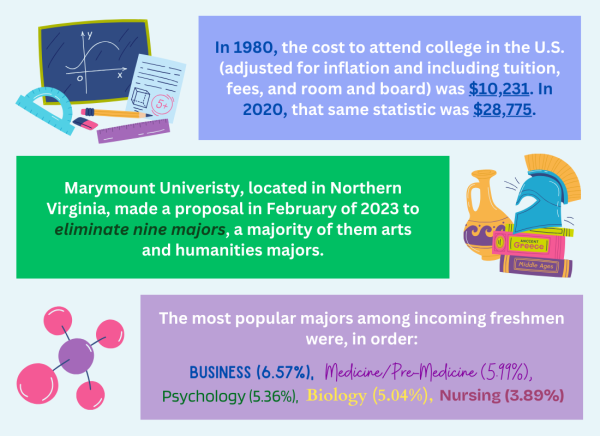Latinos Showed Up for this Election
December 16, 2020
Weeks after the 2020 presidential election, many still try to comprehend the fiasco that the election process was–especially Latino voters. With a cutthroat competition in battleground states, accusations of voter fraud, added with a long wait time to call the winner made this election far from normal.
There are approximately 60.6 million Latinos in the United States, making them 18 percent of the total U.S. population. With each year, those numbers continue to steadily increase. From 2018 to 2019, over 930,000 additional Latinos registered in the U.S. census. Latinos also accounted for 52 percent of all U.S. population growth from 2010 to 2019.
There is not one universal type of Latino. Latinos in the U.S. come from distinct backgrounds. There are: Mexicans, Salvadorans, Puerto Ricans, Cubans, Guatemalans and many more national groups, 20 in all, that make up the U.S. Latino population.
Despite these drastic differences, there is one truth to be found among Latino voters:
We showed up.
A record breaking number of 32 million Latinos were eligible to vote in 2020. The Pew Research Center found that from 2000 to 2018, the number of total eligible U.S. voters increased from 193.4 million to 233.7 million and that Latinos accounted for 39 percent of that growth. The Pew also stated that for the first time in history, Latinos are the largest minority group of US voters.
Latino votes matter. We can see their significance and impact in our own state of California.
Politics change and Democratic majority states like California didn’t always vote the way they do now. Latinos had an important role in turning California blue. Before the 1990s, California leaned and voted Republican in most presidential elections. It wasn’t until 1994 when the controversial Proposition 187–which denied public services like education and non-emergency health care to illegal immigrants–was passed that Latinos began to actively participate in their state’s politics.
The proposition was ruled unconstitutional in 1997 after major backlash by the Latino communities and activists. As their population numbers grow, many Latinos voted Democrat, helping to cement California as a blue state during presidential elections.
And we showed up.
Joe Biden won California with a 77 percent Latino vote compared to Donald Trump’s 21 percent. Whether these statistics change is determined by future policy.
Latinos are as politically diverse as they are ethnically and their differences have proven key to delivering victories in battleground states.
Being Latino means being from everywhere, and that is exactly what America is supposed to be about.
— Raquel Cepeda
It was the ceaseless efforts of grassroots movements like Living United For Change (LUCHA) and worker unions Unite Here in Arizona, that led to a surge in Latino voter registration and an eventual Democratic win in the battleground state. Arizona hadn’t voted for a Democrat since Bill Clinton in 1996. According to AP News, Biden won Maricopa County–Arizona’s most populous county–by more than 45,000 votes and won the entire state by a 10,000 vote margin.
From July to Election Day, LUCHA and Unite Here volunteers made about 8 million calls to eligible voters and knocked on over 1.15 million doors. They estimate that voter turnout rose by 20 percent since 2016–most of those votes going to Biden.
Alejandra Gomez, a member of LUCHA, explained in an interview with the Arizona Republic, that these community groups “are the ones that built the relationship with not only voters but the rest of the communities that had never received one door knock from a party, one mailer, one call to participate in an election.”
Latino voters finally felt like they were being cared for and had a voice and say in their country’s future.
So they showed up.
Although most Latinos–such as Mexicans and Puerto Ricans–tend to lean Democrat when voting, other Latinos, such as Cubans, lean Republican. The American Election Eve Poll estimates that 52 percent of Cubans voted for Trump compared to 23 percent of Mexicans.
Trump campaigned to win the “Latino Vote.” He rallied Floridian voters through his bright, Spanish-language television ad called “Por Trump,” featuring a catchy theme song by Cuban-American band Los 3 de La Habana.
And Cuban Americans played a fundamental role in Trump’s Florida victory. An NBC News exit poll states that about 55 percent of the Cuban-American vote went to Trump along with 48 percent of other Latinos.
In an interview with NPR, Domingo Garcia, president of the League of United Latin American Citizens (LULAC) wishes Biden would have “invested in the Latino community more” and explains that Biden received 250,000 less Latino votes in Miami-Dade County than Hillary Clinton did in 2016.
So, is the “Latino Vote” real? An overall trend towards voting Democrat definitely exists, but to exclude other Latinos excludes their individuality and their experiences. At times, Democrats do the bare minimum to appeal to Latinos and still win over the majority of their votes. Latino votes are treated like leftovers when they should be considered part of the main course.
In her memoir “Bird of Paradise: How I Became Latina,” Dominican American author Raquel Cepeda best explains this complex issue of what it means to be Latino and what Latinos mean to America.
“Being Latino means being from everywhere, and that is exactly what America is supposed to be about,” said Cepeda.
Latinos should not be a political afterthought. After all, we’ve proved in this election how powerful we can be when we show up.
This story was originally published on Grizzly Gazette on December 4, 2020.































![IN THE SPOTLIGHT: Junior Zalie Mann performs “I Love to Cry at Weddings,” an ensemble piece from the fall musical Sweet Charity, to prospective students during the Fine Arts Showcase on Wednesday, Nov. 8. The showcase is a compilation of performances and demonstrations from each fine arts strand offered at McCallum. This show is put on so that prospective students can see if they are interested in joining an academy or major.
Sweet Charity originally ran the weekends of Sept. 28 and Oct. 8, but made a comeback for the Fine Arts Showcase.
“[Being at the front in the spotlight] is my favorite part of the whole dance, so I was super happy to be on stage performing and smiling at the audience,” Mann said.
Mann performed in both the musical theatre performance and dance excerpt “Ethereal,” a contemporary piece choreographed by the new dance director Terrance Carson, in the showcase. With also being a dance ambassador, Mann got to talk about what MAC dance is, her experience and answer any questions the aspiring arts majors and their parents may have.
Caption by Maya Tackett.](https://bestofsno.com/wp-content/uploads/2024/02/53321803427_47cd17fe70_o-1-1200x800.jpg)
![SPREADING THE JOY: Sophomore Chim Becker poses with sophomores Cozbi Sims and Lou Davidson while manning a table at the Hispanic Heritage treat day during lunch of Sept 28. Becker is a part of the students of color alliance, who put together the activity to raise money for their club.
“It [the stand] was really fun because McCallum has a lot of latino kids,” Becker said. “And I think it was nice that I could share the stuff that I usually just have at home with people who have never tried it before.”
Becker recognizes the importance of celebrating Hispanic heritage at Mac.
“I think its important to celebrate,” Becker said. “Because our culture is awesome and super cool, and everybody should be able to learn about other cultures of the world.”
Caption by JoJo Barnard.](https://bestofsno.com/wp-content/uploads/2024/01/53221601352_4127a81c41_o-1200x675.jpg)













